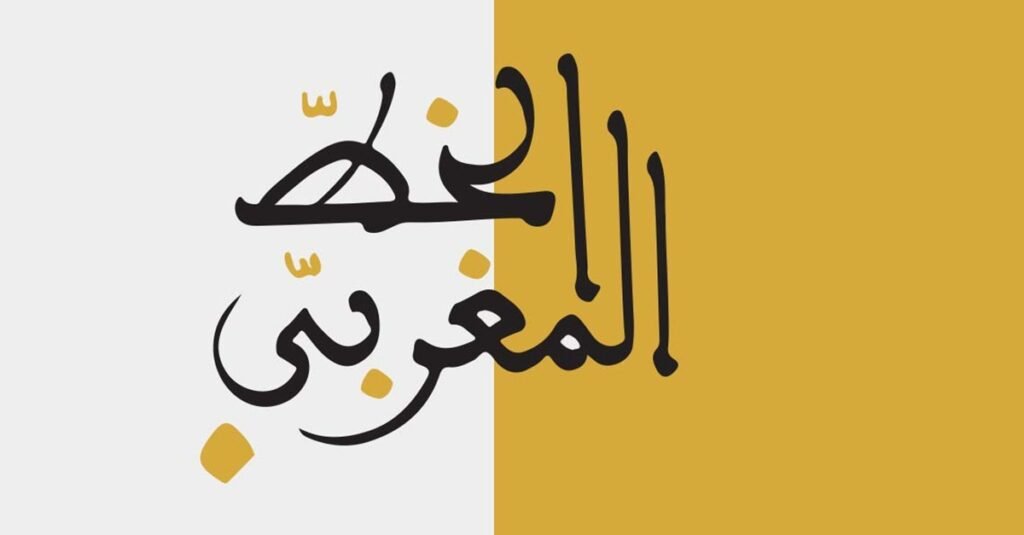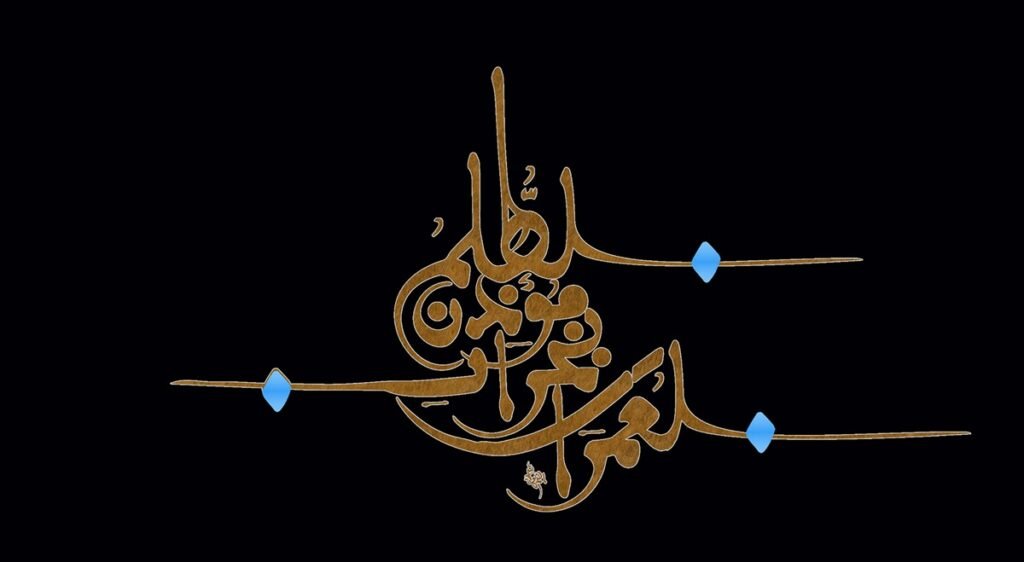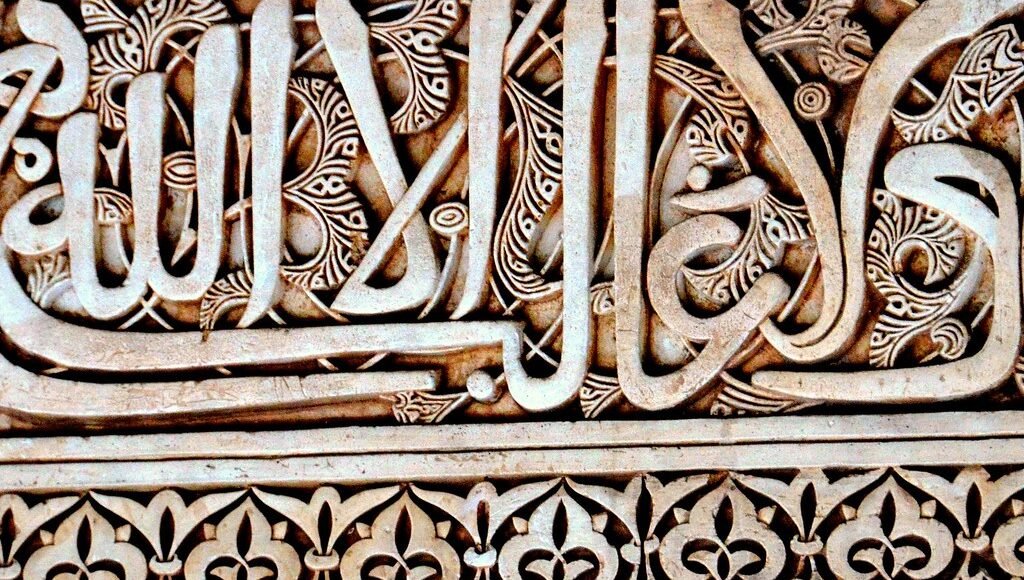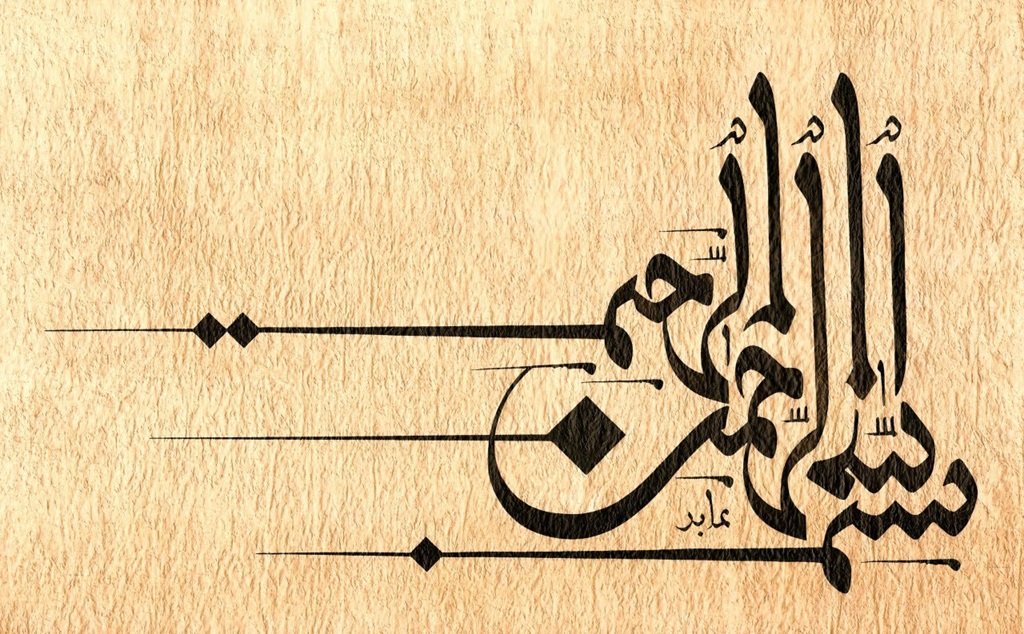Moroccan calligraphy: a visual memory and an unmistakable identity

introduction
When Moroccans write, they don't just inscribe words; they chart a history and identity that spans time. Moroccan calligraphy, one of the authentic branches of Arabic calligraphy, is not merely a writing tool; it is an art form in its own right, a symbol of the cultural authenticity that connects Morocco to its broader Andalusian, African, and Islamic environment. This script, which first emerged centuries ago, has remained a testament to Moroccans' genius in transforming letters into a visual language brimming with spirit and beauty, preserving heritage and renewing the presence of identity with every generation.

Roots and Evolution
The beginnings of Moroccan calligraphy date back to Kufic script It entered North Africa with the Islamic conquests in the first century AH/seventh century AD. However, Moroccans were not content with simply transmitting it as is, but rather adapted it to suit their own cultural particularities, gradually creating a script with purely Moroccan features. Historical and cultural circumstances, particularly Morocco's interaction with Andalusia and the countries of the Islamic West, helped enrich this art and produce it in various forms.
With the development of scientific, religious and political life, various styles of Moroccan calligraphy emerged, the most prominent of which are:
- simplified lineThe most common in copies of the Qur’an, it is characterised by its clarity and fluidity.
- The jeweled line:It has a delicate decorative character, used in writing royal decrees and official documents.
- Moroccan Kufic or Musnad scriptIt remained close to the old Kufic style but was more flexible and decorative.
These styles were not merely writing styles, but embodied the diversity of cultural, political, and religious functions of calligraphy in Morocco.
Special aesthetics

One of the most notable features of the Maghrebi script is its unique aesthetic imprint, which sets it apart from Eastern scripts such as Thuluth and Naskh. It is a script Mostly roundIt is characterized by soft curves and a clear structure that makes it easy to read despite its decoration. It is also considered round dots One of its most prominent visual features, unlike the square or slanted ones in other fonts.
The letters are elaborately crafted in a strikingly artistic manner, particularly the letters fa and qaf, which are carefully crafted to distinguish Moroccan calligraphy from other forms. Perhaps this balance between simplicity and rich decorative richness is what makes this script a visual masterpiece in its own right, especially when combined with geometric inscriptions or plant motifs in Quranic manuscripts or on mosque walls.
Religious and cultural roles

Moroccan calligraphy was not limited to the artistic aspect, but rather carried essential functions in the religious and cultural life of Morocco:
- Copies of the Qur’anIt is closely associated with the Holy Qur'an, which gives it a special sanctity. Moroccan libraries still preserve ancient Qur'ans written in Moroccan script, which are considered artistic and spiritual masterpieces.
- Royal documentsThe Moroccan state adopted it in drafting decrees and charters, and it became a symbol of legitimate authority.
- architecture and decorationIt was used to decorate the walls of mosques, zawiyas, and madrasas, such as the Al-Qarawiyyin Mosque in Fez, adding an additional aesthetic dimension to Moroccan architecture.
- religious educationIt remained a strong presence in schools and Quranic schools, where thousands of students learned to write the Holy Quran in this script, which strengthened its continuity across generations.
rooted identity
Moroccan calligraphy is not just a means of writing, but it is A vessel for collective memoryThanks to its artistic uniqueness, it reflected Morocco's blending with its Andalusian and African surroundings, becoming a defining mark of Moroccan identity. It's no surprise that Moroccans to this day still look up to it with pride, considering it a symbol of cultural authenticity and civilizational sovereignty.
It is a script that embodies the blending of civilizations and expresses historical continuity, from the Qurans that spread throughout villages and countrysides, to the documents that ratified fateful political decisions. All of this has made Moroccan script a living memory of the Moroccan nation.
In modern times

Despite the changes imposed by globalization and digitization, Moroccan calligraphy has not disappeared, but rather has remained resilient thanks to its presence in several fields:
- Modern Qur'ans:Like the “Hassan II Qur’an,” which restored Moroccan calligraphy’s radiance in the contemporary era.
- Logos, medals and stamps:The state has adopted it as part of the official visual identity.
- Contemporary visual artMoroccan artists have drawn inspiration from Moroccan calligraphy in their paintings, giving it new dimensions that transcend tradition and embrace free creativity.
Thus, Moroccan calligraphy has proven its ability to adapt to the times, and that it is not an art form relegated to the past, but rather a tool of expression that is open to renewal.
Challenges and prospects
Despite its status, the Moroccan script faces real challenges:
- His learning declined In the shadow of the global digital dominance.
- Weak academic formation Specialized in teaching it compared to some Islamic countries.
- Limited use In contemporary business and media fields.
But on the other hand, there are promising opportunities to revive it:
- Integrating it into educational programs In the institutes of fine arts.
- Employing it in graphic design And Moroccan brands to give it an authentic local character.
- Documentation and protection By including it on UNESCO's list of intangible heritage, it gives it an international dimension and institutional protection.
conclusion
The Moroccan line remains Visual memory and cultural identity It is indelible, a testament to the Moroccans' genius in transforming letters into art, and writing into a bridge connecting the past to the present. From ancient Qurans, official documents, architectural decorations, and contemporary art, this script remains a part of the Moroccan nation's spirit.





